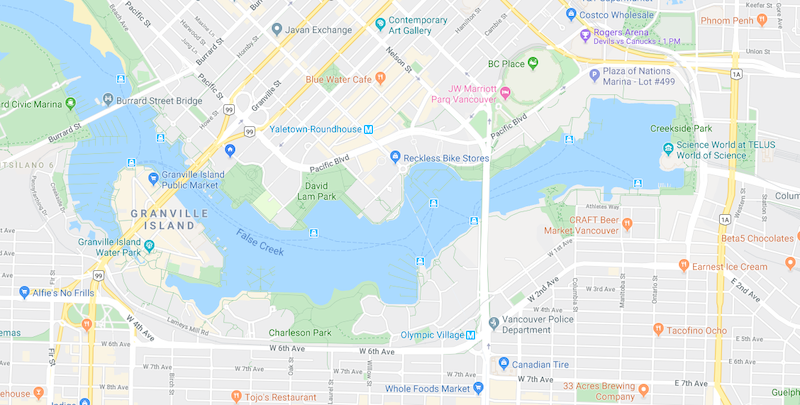Sometimes the obvious advice you need to hear isn’t obvious to you. Here’s an example of this that happened just last week.
A guy on Twitter asked me if I did coaching. He felt stuck in his career and wanted to pay me to give him advice. I don’t do individual coaching (at least for money) but, I was curious so I asked him to send me some details of his situation to see if I could help.
Here were his tweets:


What do you think his mistake was?
…
In my mind, the biggest mistake he made was simply that he was asking me what to do next. I’m not a singer, and I don’t even work in the music industry.
So, lacking specifics, I gave the advice that was obvious to me: you need to locate people who are 2-3 steps ahead of you in the kind of career you want to have. You need to talk to these people, not just random people on the internet you admire to map out how your career actually works.
His response:

This seems obvious in retrospect, but it actually happens a lot.
In early pilots for our course, Top Performer, Cal and I had students work through an exercise of interviewing someone in their field for career advice. One person decided he wanted to pick Tim Ferriss, even though he was working an engineering job.
The problem is that Tim Ferriss isn’t an engineer. He’s an author, podcaster and investor. If you’re not in one of those fields, the advice Tim could give (if he was gracious enough for an interview) would have to be restricted to highly generic advice.
In fact, even if you are an author, podcaster or investor, it may not be the case that Tim Ferriss will offer super helpful advice. Why? Because Tim Ferriss is incredibly famous! For most people, Tim Ferriss isn’t 2 or 3 steps ahead but a dozens of steps ahead. His advice for a new podcaster is going to be hampered by the fact that when he launched his podcast, he was already a minor celebrity. A lot of his personal experiences won’t translate to someone just getting started today.
The Strategy and the Map
To succeed in your career—whether that’s becoming a singer, starting a business, earning tenure or just getting a job—you need two things:
- A strategy. This is a high-level, abstract process for generating career improvements.
- A map. This is a low-level, detailed picture of what your career looks like, concentrating on the areas that surround you.
The strategy is important—it’s one of the few areas where having the right approach to your career can make a big difference. Top Performer, is geared towards providing this half—giving a set of tools for thinking about your career and making progress.
But, in addition to your strategy, the map is essential. Importantly, you need to have the details about your immediate vicinity.
Imagine if you had to plan a trip, but you had only the map below?

Now contrast that with a map where all the roads have been filled in:

Regardless of where you are heading, the second map is going to get you much further. You’ll get lost less. You’ll know which streets are dead-ends, and which routes have traffic jams and where the expressways are. Without a map, you’re just wandering in the general direction of your goal.
Mistakes You’ll Make When Drawing Your Map
Being able to draw an accurate map is one of the skills Cal and I emphasize in Top Performer. Indeed, we spend the first two weeks of our course on getting the skills to get it right. Over the last several years of teaching the class, we’ve noticed all sorts of common mistakes that would-be career mappers make:
Obvious Career Mistake #1: You mostly ask for general advice.
Finding the right people, those people 2-3 steps ahead in their careers, is the first step. However, when talking to these people, many would-be mappers get mostly general advice—work hard, make connections, don’t give up. What gives?
The answer is that if you want good answers, you need to ask the right questions. Asking someone what they did, rather than for abstract advice, is a better question because it focuses on specifics, not generalities.
Obvious Career Mistake #2: You copy the surface, not the cause.
What time does the person wake up? Do they have a kale smoothie for breakfast or oatmeal? Apple or Android? None of these things matter…
Another mistake you can make in your map is looking at surface characteristics—obvious habits, quirks or beliefs that the person you admire holds. Instead, you have to look at what is driving their results. What skills have they mastered? What assets did they build? What projects did they cultivate?
Obvious Career Mistake #3: You plan a route that’s easy, even if it’s not pointed at your destination.
Often the kinds of efforts that will move forward your business are hard. They are uncomfortable. They require doing things that you (currently) have no idea how to do.
Many people pass on these to pick hobby projects instead. Projects that are fun, seem related to their career, yet, ultimately deliver underwhelming results. Improving their social media marketing, rather than creating compelling content. Installing a new development environment, rather than becoming an expert in their language. Designing business cards instead of drumming up business.
How Can You Avoid These Pitfalls?
Knowing how to draw a detailed and accurate map of your career is the first step. The second is knowing how to navigate it. How to cultivate the skills, assets and signals that will move you forward in the direction you want to proceed.
Cal Newport and I are going to be reopening Top Performer, our course for improving your career, next week. If you’re interested in joining us on an eight-week program to develop the tools to understand your career and make progress towards what really matters, we’d love to see you in the class.


 I'm a Wall Street Journal bestselling author, podcast host, computer programmer and an avid reader. Since 2006, I've published weekly essays on this website to help people like you learn and think better. My work has been featured in The New York Times, BBC, TEDx, Pocket, Business Insider and more. I don't promise I have all the answers, just a place to start.
I'm a Wall Street Journal bestselling author, podcast host, computer programmer and an avid reader. Since 2006, I've published weekly essays on this website to help people like you learn and think better. My work has been featured in The New York Times, BBC, TEDx, Pocket, Business Insider and more. I don't promise I have all the answers, just a place to start.